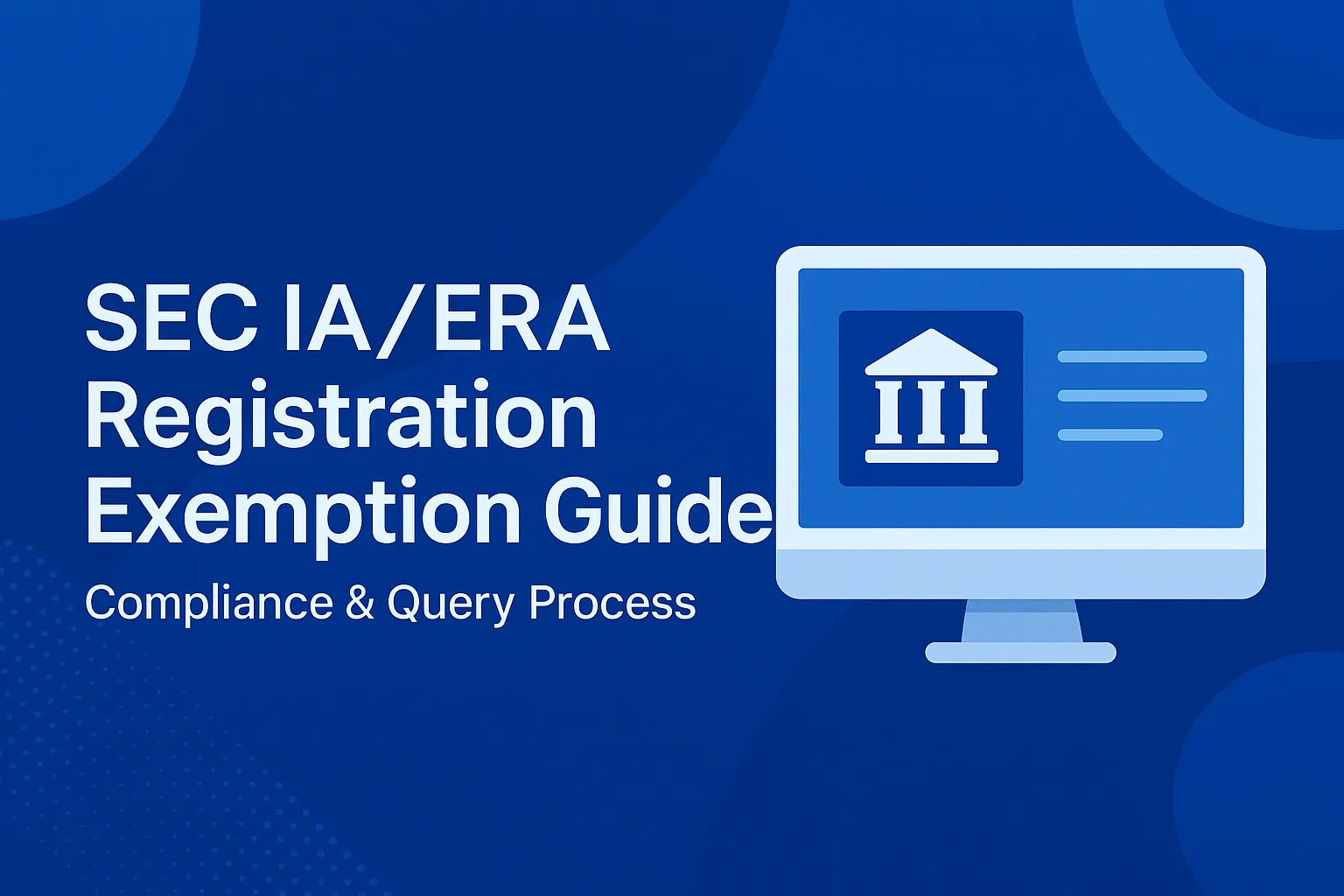 BrokerHiveX
BrokerHiveX BrokerHiveX
BrokerHiveX BrokerHiveX
BrokerHiveXSummary:Wondering how to find information on SEC registration exemptions for investment advisers (IAs)? This guide details the differences between SEC-exempt advisors (ERAs) and registered investment advisors (RIAs), providing steps for searching the IAPD database, explanations of Form ADV, a comparison chart of RIA/ERA compliance, and common risk warnings. This guide helps investors verify advisors' identities, avoid working with unlicensed platforms, and guides businesses in choosing the appropriate SEC compliance path.

The US Securities and Exchange Commission (SEC) regulates investment advisors under the Investment Advisers Act of 1940 .
Investment Adviser (IA) : An individual or institution that provides securities investment advice, asset management or related consulting.
Registered Investment Adviser (RIA) : Must be fully registered and disclose business model, fees, client types, risks, etc.
Exempt Reporting Adviser (ERA) : enjoys registration exemption under certain conditions, but still needs to file, which is "simplified compliance".
👉 The core goal of regulation is to protect investors and balance the compliance burden .
The SEC allows some advisors to choose ERA filing instead of fully registering as RIAs. Common scenarios include:
Private Fund Adviser Exemption
Serving Private Funds only
Less than $150 million in assets under management in the U.S.
Venture Capital Adviser Exemption
Specialized in providing consulting services for VC funds
Must meet the SEC’s strict definition of “Venture Capital Fund”
Intrastate Adviser Exemption
Customers are all in the same state
Does not involve exchange-listed securities
Other limited exemptions
Provide services to insurance companies only
Some foreign consultants have very small operations in the U.S.
Investors or advisors can check the advisor's registration or exemption information through the SEC's official database IAPD (Investment Adviser Public Disclosure) .
🔗 IAPD official website entrance
Determine the query object
Consultant's Full Name
CRD number (unique number)
SEC Number
Enter the IAPD official website
Enter the company or individual consultant name in the search box
It is recommended to use CRD number first to avoid confusion with the same name
View search results
Click on the target company to enter the profile details page
Compare the address and contact information with those disclosed on the official website
Confirm registration status
Registered Investment Adviser → Registered RIA
Exempt Reporting Adviser → ERA filing
No results displayed → May be unregistered or impersonating
Download Form ADV
RIA: Form ADV Part 1 & 2 (Full Information)
ERA: Form ADV Part 1A (partial content)
Cross-validation information
Confirm AUM (whether ≤ US$150 million)
Check Disciplinary Actions
Is it consistent with the disclosure on the consultant's official website?
Regular review
ERA consultants are required to update their filings annually
Asset size exceeds the threshold → must be converted to RIA
Investors recommend that you check at least once a year
| project | RIA (Registered Investment Advisor) | ERA (Exempt Reporting Advisor) |
|---|---|---|
| Registration Authority | SEC or state regulation | SEC (filing system) |
| Disclosure Documents | Form ADV Part 1 & 2 | Form ADV Part 1A (partial content) |
| Information transparency | High, full disclosure of business, expenses, and customers | Low, only fund-related information |
| Compliance Check | Regular, possibly routine audits | Occasional spot checks |
| Customer Group | Retail investors, institutions, and funds | Private equity funds, VC funds |
| Risk Level | Low, strong investor protection | Higher, limited disclosure |
A private equity fund advisor with $100 million in AUM, serving only accredited investors → listed as ERA in the IAPD, compliant with filing regulations.
A hedge fund advisor managed over $150 million but registered as an ERA. → The SEC investigated, fined the advisor, and forced the advisor to convert to an RIA.
✅ Enter IAPD and confirm whether the consultant is an RIA/ERA
✅ Download Form ADV and check the disclosures ✅ Confirm whether the AUM size meets ERA standards ✅ Check for disciplinary records ✅ Compare the advisor’s official website with the filing information ✅ Review regularly every year to avoid working with “expired ERA”
ERA is not “zero regulation” : its filing information is available in the SEC database, but disclosure is limited.
There are significant differences in compliance between RIAs and ERAs : ERAs have low transparency and investors should be cautious.
Practical suggestions :
Investors: Before working with ERA advisors, you should verify the authenticity of their filings and fund structure.
Consulting firms: If asset size increases in the future, they should proactively convert to RIA to avoid SEC penalties.
Key Points : The only authoritative channel for querying SEC exempt advisor status is the IAPD database . Through the "search → confirm status → download file → verify → regular review" process, both investors and advisors can ensure compliance and security.
BrokerHivex is a financial media platform that displays information sourced from the public internet or uploaded by users. BrokerHivex does not endorse any trading platform or instrument. We are not responsible for any trading disputes or losses arising from the use of this information. Please note that the information displayed on the platform may be delayed, and users should independently verify its accuracy.